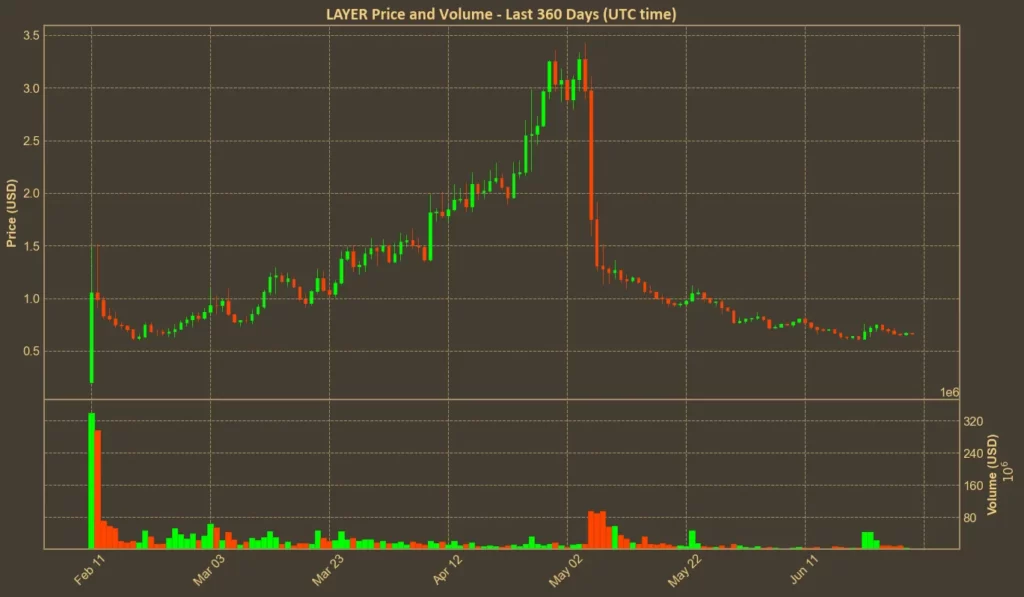The first half of 2025 has brought some severe and sudden crypto crashes. Unlike gradual declines driven by market cycles, these events involved abrupt drops that erased most of a token’s value within hours. Below is a summary of the biggest crypto crashes so far this year, including details on how they unfolded and the explanations provided by project teams.
Table of Contents
Mantra (OM) – 90% Collapse in an Hour
In April, Mantra (OM), then among the top 20 cryptocurrencies, crashed by over 90% within an hour. Before the crash, OM traded above $6. It briefly fell below $0.50 and has continued to decline since, now trading below $0.22.

The Mantra team attributed the crash to forced liquidations on centralized exchanges during low liquidity hours. They denied involvement in any rugpull or exploit. A post-mortem published days later confirmed that team and advisor tokens remained locked, and buyback and burn plans were announced to restore confidence. Despite these measures, OM has not shown signs of meaningful recovery.
Read also: Mantra (OM) Still Struggles: 4 Reasons Investors Aren’t Coming Back
Act I: The AI Prophecy (ACT) – Leverage Rule Change Triggered Crash
On April 1st, ACT lost more than 50% of its value within minutes. Its price fell from around $0.19 to under $0.08 in less than half an hour. Blockchain data indicated that Binance’s sudden change to margin and leverage rules for several altcoins, including ACT, triggered forced liquidations worth millions of dollars.

Following the initial crash, ACT continued to decline. It is now trading just above $0.04 and has not recovered to pre-crash levels.
Polyhedra (ZKJ) – 80% Drop Amid Liquidity Problems
In mid-June, Polyhedra Network’s token ZKJ lost over 80% of its value within an hour. Prior to the crash, ZKJ traded just below $2. The price fell to around $0.27 at its lowest point and now struggles to hold above $0.2, recently setting a new all-time low.
According to Polyhedra’s post-mortem, the crash was caused by large holders removing liquidity and coordinated on-chain sell-offs. The team accused KOGE of insider selling and liquidity manipulation, though KOGE has not issued a statement addressing these claims.
Solayer (LAYER) – Gradual Decline After Sudden Drop
Solayer (LAYER) saw a sudden drop of over 30% in a single day in early May, falling from above $3 to nearly $2. Unlike other crashes, no direct explanation was provided by the team. The price continued declining after the initial event and currently trades around $0.66, down nearly 80% from its all-time high set two months earlier.

The Solayer team has not published a post-mortem or public statement regarding the cause of the crash.




